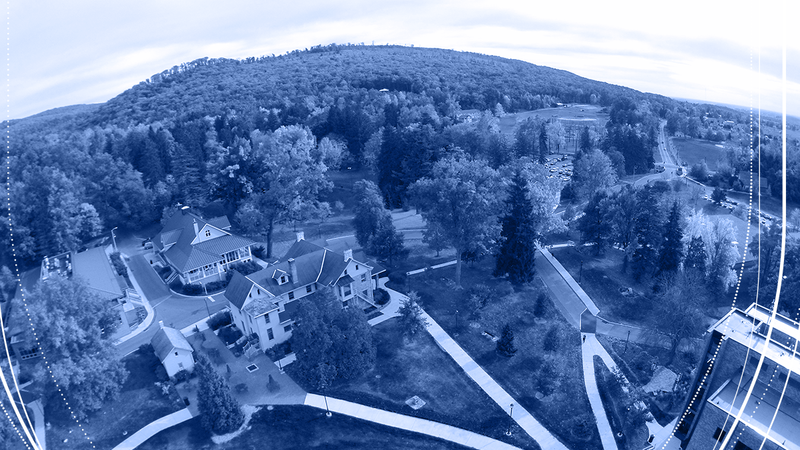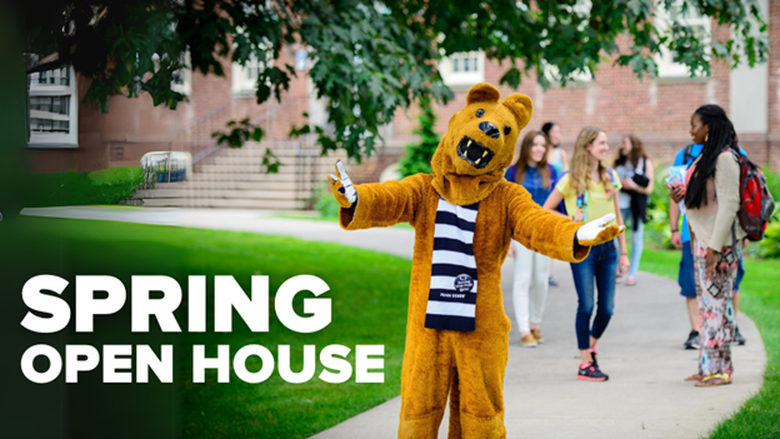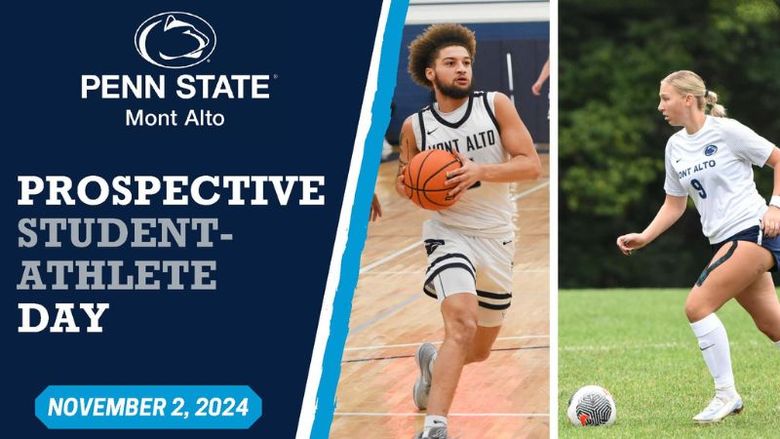

This dialog contains the full navigation menu for this site.

Over the summer, Penn State Mont Alto faculty worked to rethink and reconfigure their classes for a campus impacted by COVID-19, so students this fall will have the best educational experience possible—whether it’s face-to-face in a classroom, online or a hybrid of different methods.
Penn State President Eric Barron reported that 50 percent of fall courses university-wide will have a face-to-face component with the remainder conducted remotely. At the Mont Alto campus, approximately 80 percent of classes will include some face-to-face time, according to Michael Doncheski, director of Academic Affairs. “The fact that a large percentage of our faculty wanted to incorporate face-to-face teaching in their classes is very impressive,” he said. “This speaks to the faculty’s commitment to being back in the classroom again and giving their students the best possible Penn State educational experience.”
During the summer the Mont Alto staff rearranged classrooms and added non-traditional spaces so that social distancing can take place, as well as tweaked technology for Zoom sessions and remote learning. On August 13, faculty will hold a special Mont Alto Day of Enrichment (MADE) to walk through their classrooms and preview the experience from both the student and teaching perspectives.
Many faculty members have not returned to campus since spring break, when the decision was made to go to remote learning due to the pandemic, according to Kira Hamman, a mathematics professor and director of Mont Alto’s honors program who also coordinates the campus’ MADE sessions. “So, many faculty members don’t know what their classrooms will look like for the fall, or exactly how the technology in the classrooms will work. This day is designed to help them know what to expect and get comfortable with the changes, rather than start cold on the first day of class,” she said.
Hamman said faculty will spend half the day in the role as teacher and the other half as a student. “They will be able, for example, to be in a Zoom session from their classroom and experience what it looks like from the student’s view, and put on a mask and other personal protective gear for a lab and see how that will work,” Hamman said.
A MADE session to discuss racism and equality issues had already been scheduled for August, Doncheski said, when faculty members approached him about setting up the second session. “The idea came from them and I’m very proud that they took this initiative. Holding class in a pandemic is a new experience for everyone, and this session should help things go more smoothly,” he said.
Flexibility is the keyword for a successful fall semester. “Some students are changing their minds as we get closer to Aug. 24 about whether they want to be in a classroom setting or do everything remotely, so everything is still very fluid,” Doncheski said. “This semester requires a lot of flexibility; a lot of collaboration, understanding and creativity. There’s no right or wrong way to do this. We have to try to meet our students’ needs, and recognize that people will have different ways of doing things.”
Mont Alto’s intimate campus and small class sizes help with social distancing, though the small size of many classrooms posed a challenge. Some professors chose to alternate half their students in class one day with the other half online and then switch who’s in class on the next day. Others chose to do their lectures remotely and their labs in the classroom.
Renee Borromeo, professor-in-charge for Mont Alto’s physical therapist assistant program, wanted to get her students back to hands-on lab work. She reduced the number of students in each lab, assigned every student just one lab partner for the semester, and limited the time they work with each other to less than 10 minutes before taking a break. To cut down on exposure, students scheduled to have more than one lab will attend all their labs with the same group of students. All students will wear disposable surgical gloves and masks, goggles and possibly surgical gowns.
“We have to model our behavior for the students, not only to keep them safe, but also to model what hospitals do for the safety of their patients, since our students will be working in that environment,” Borromeo said. “We’ve never really dealt with a situation like this before in our lifetimes. We have to be very cautious.”
Students are also making use of a new app, PhysioU, which provides video demonstrations of many commonly applied physical therapy procedures and activities. The videos allow students to watch procedures over and over again, without the instructor having to demonstrate them physically on a student volunteer.
Robin Gay Yaure, professor of human development and family studies, will use a hybrid model for her two classes—lecturing remotely on Mondays and then holding in-person classes the rest of the week. She will record all the sessions, so if students are not comfortable or feel unsafe in the face-to-face classroom, they can take the entire class online.
“It takes a lot of time to plan for two separate tracks but really, the benefit is that we are transforming how we teach in the long run, for the future,” Yaure said.
Engineering associate professor Jacob Moore plans to use the flipped classroom model in his courses, which will provide online lectures and quizzes to students before class. Then in the classroom, students will work on complex problems where they can talk with their classmates and ask Moore questions.
Usually in his engineering design class, Moore assigns student teams to work with a local nursing home to develop assistive technologies for its residents. “That’s obviously not happening this semester. Instead I am focusing on one past product (a bingo board for a resident with tremors and limited dexterity) and having all teams work on something for that problem with me as the stand-in for the resident for testing,” Moore said. “I chose that product because the prototypes can easily be built using laser cut and 3D printed parts.”
Requirements for social distancing and wearing masks present some hurdles. “My biggest challenge will be creating a classroom culture of engagement when people really can’t interact with each other,” Hamman said. “I usually like to walk around the classroom and help individual students as they work at their desk, and I realize I have to find an alternative way of accomplishing that.”
Doncheski praised the faculty for their continuing commitment and creativity to reopen the campus. “The university has a good plan, and we’d like to see it work for the fall semester,” he said. “If we can keep everyone on track until Thanksgiving with no bumps in the road, we all will be very happy.”


